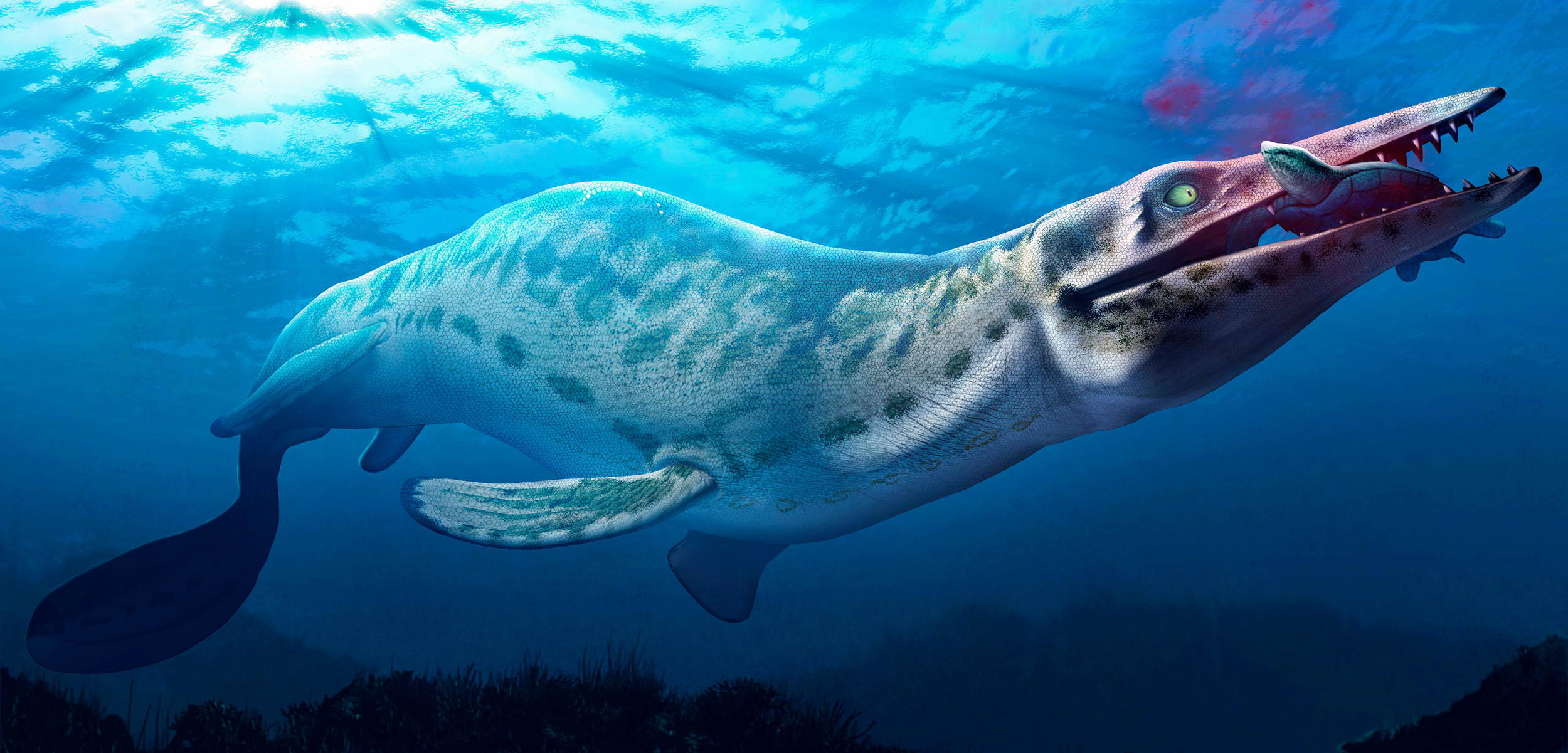Even Sea Monsters Got the Bends
Forensic analysis of modern turtles unveils an unexpected cause of death for ancient marine reptiles.
Article body copy
Decompression sickness, or the bends, is a threat humans face if we ascend too swiftly from the ocean’s depths. If divers don’t take proper care when returning to the surface, dissolved gases can enter their joints, skin, and brain, forming damaging bubbles—sometimes with lethal consequences. But decompression sickness is not restricted to people, nor, as it turns out, is it a new problem. A recent analysis of the fossil record reveals that even prehistoric sea monsters were laid low by bubbles.
Bruce Rothschild, a physician based at Northeast Ohio Medical University, moonlights as a paleopathologist, investigating the effects of disease on ancient animals. While studying fossilized vertebrae of the mosasaur Platecarpus—a four-meter-long marine reptile that lived around 84 million years ago—for signs of infection, he and his colleagues sliced open the bone to examine the internal architecture. What they found surprised him: a strip of dead tissue in an otherwise healthy bone.
The diagnosis was avascular bone necrosis. Something had blocked the blood flow to the tissue, which killed the cells. The same condition can affect bends-stricken divers when gas bubbles block the flow of blood. After ruling out other potential causes for the dead tissue, such as bismuth poisoning and radiation damage, Rothschild concluded that decompression sickness was the only explanation that made sense.
Soon enough, Rothschild was finding bone necrosis in all sorts of prehistoric reptiles. Snake-necked plesiosaurs and fish-like ichthyosaurs, for instance, had the same symptoms. But mosasaurs were the most affected.
“Avascular necrosis was universal in half a dozen genera of mosasaurs, and it didn’t matter whether they came from Alabama or Belgium,” Rothschild says.
The reason why these ancient reptiles, otherwise so well adapted to underwater life, succumbed to the bends was a mystery.
Paul Jepson, a veterinarian at the Zoological Society of London, says that decompression sickness was widespread in the fossil record of ancestral marine animals but became less prevalent as time went on. Perhaps reptiles just needed time to evolve out of this affliction, he says.
Yet the bends has not vanished completely. The condition is rarely seen in modern reptiles, but the most conclusive cases come from turtles. In 2014, Daniel García Párraga, a veterinarian at Oceanogràfic, an aquarium in Valencia, Spain, documented the first known cases of the bends in loggerhead turtles, in a paper coauthored by Jepson. Out of 67 turtles brought into García Párraga’s surgery after having been accidentally caught by local fishermen, 29 showed signs of decompression sickness.
That there is evidence for the bends in both ancient and modern reptiles, yet few known cases in mammals, prompted Agnete Carlsen, a medical doctor working with the Natural History Museum of Denmark, to suggest a possible explanation: a flaw in the reptilian heart that predisposes it to decompression sickness.
“In the reptile heart, there is a connection between the right and the left heart chambers,” Carlsen explains. When an animal dives, blood is shunted from right to left; during fast decompression, this allows bubbles to cross the arterial circuit and cause damage.
People born with a reptile-like opening between their heart chambers face the same problem. That disorder, called patent foramen ovale, is unlikely to cause serious health problems on land, but makes people far more susceptible to decompression sickness.
If prehistoric marine reptiles had hearts like modern turtles—something that can be inferred from their place in the reptile family tree—this could explain the prevalence of decompression sickness in the fossil record.
That said, the decompression sickness in the turtles García Párraga examined likely had more to do with them being dragged up in fishing nets than the susceptibility of their prehistoric hearts.

